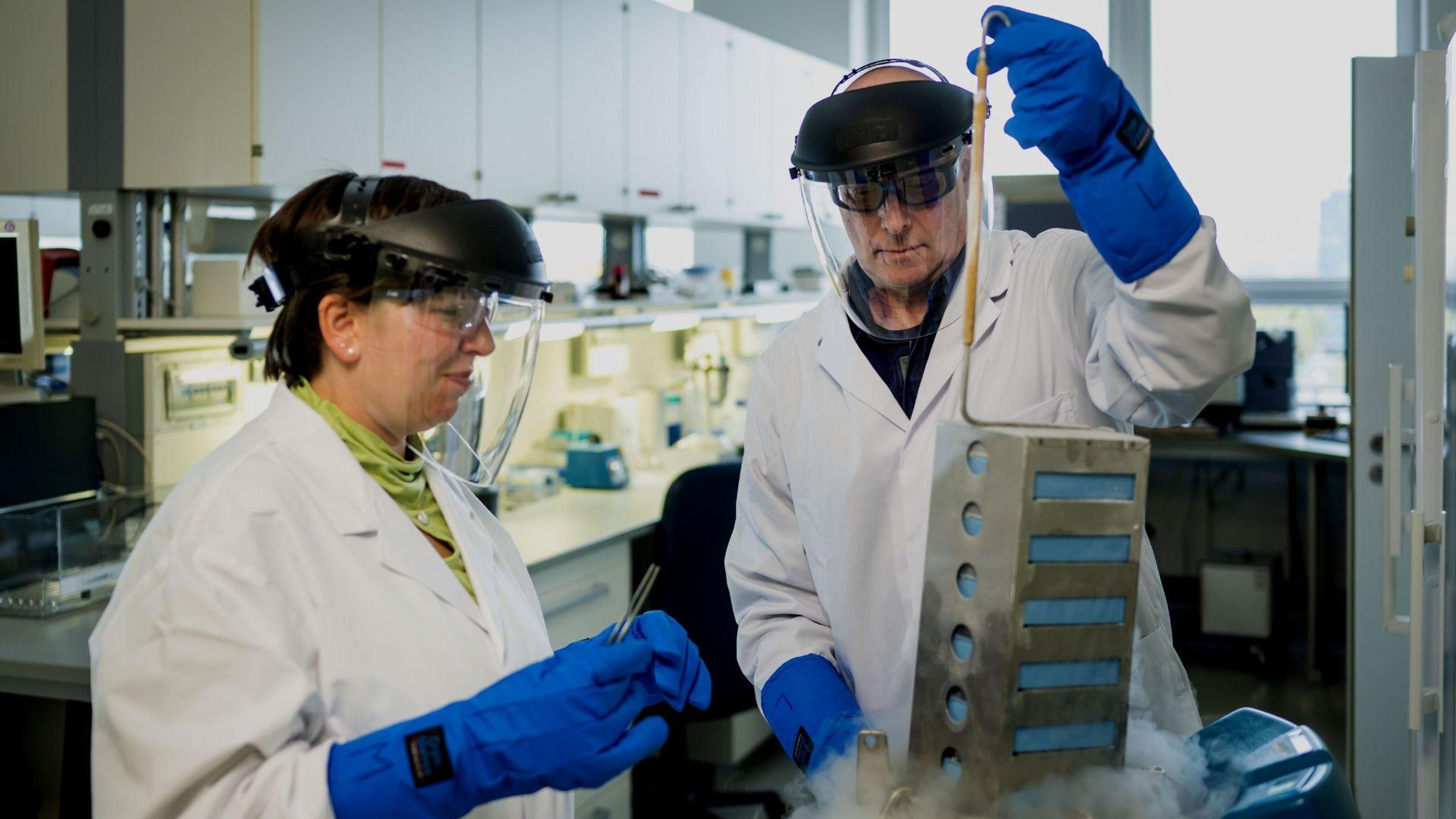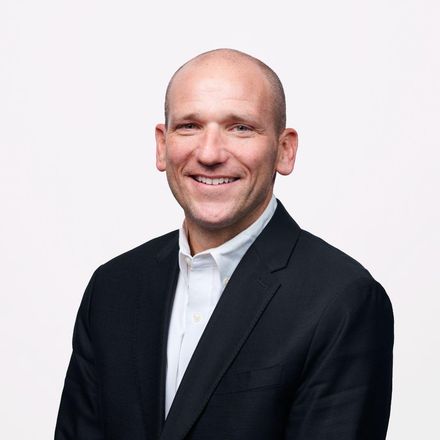Achieving R&D Excellence to Shape the Medicines of Tomorrow

Driving transformative breakthroughs that redefine the practice of medicine through excellence in R&D is at the heart of what we do. But what does it mean to achieve R&D excellence, and how does it fuel our mission to improve patients’ lives? Houman Ashrafian, Executive Vice President and Head of R&D and Mike Quigley, Chief Scientific Officer, and Head of Research, reflect on an impactful year and share their vision for the future.
Breakthrough Moments in 2024
For Mike Quigley, excellence in research is rooted in scientific rigor, a truth-seeking mindset and effective risk management. “It’s about advancing cutting-edge innovation while thoughtfully managing risk,” said Quigley. “It means having the courage to pursue bold ideas while maintaining the discipline to ensure those ideas are built on solid scientific foundations.”
Sanofi’s achievements over the past year reflect this commitment. For instance, our researchers made significant progress in genetic medicine advancing a development candidate through in-vivo cell reprogramming that is now set to enter clinical trials. This breakthrough uses lipid nanoparticles to deliver genetic material enabling T-cells to recognize and attack tumor cells.
We have also progressed a series of multi-specific biologics—drugs that bind to multiple targets or block more than one pathway simultaneously—in targeting various nodes of key disease biology in autoimmune diseases. Across immunoscience more broadly, we worked to better understand and develop medicines in immunological pathways.
Excellence must extend across the entire value chain, from discovery to development. It’s about delivering transformative medicines to patients as quickly and effectively as possible, while meeting the highest standard of quality and value.

Houman Ashrafian
Executive Vice President and Head of R&D
“True excellence in R&D also requires a commitment to lifelong learning,” Quigley added. “The scientific landscape is evolving rapidly, and staying at the forefront means continuously questioning assumptions, embracing new technologies, and fostering a culture of intellectual curiosity.”
One standout achievement, in collaboration with our partner Regeneron, were multiple worldwide approvals of the first-ever biologic treatment for COPD with type 2 inflammation, a key driver of COPD in some patients. COPD is an area of high unmet need, with many patients remaining uncontrolled despite treatment with the maximum therapies available. The team overcame the significant challenge of finding patients for the studies during the pandemic and mitigated the risk of moving directly into Phase 3 trials by staggering the studies.
“This is an example where strong underlying science meets elegant and straightforward study design,” said Ashrafian.
Building on our leadership in immunology and our neurology heritage, we are advancing neuroimmunology to help people with neuroinflammatory diseases like multiple sclerosis (MS). Our development team pushed clinical boundaries to uncover key insights into MS and the immune drivers of disability progression—its most pressing unmet need.
To address this, particularly in non-relapsing secondary progressive MS, we conducted the first successful trial of a BTK inhibitor.
Deciding Where to Focus Our Research
In such a rapidly evolving and crowded market, it can be challenging to determine which fields of research to pursue. For Quigley, the focus is on indications and diseases that are adjacent to Sanofi’s core expertise. "We look at where we can leverage our proven expertise when considering potential areas for expansion," said Quigley. For instance, genetic medicines hold promise in addressing unmet needs in fields like ophthalmology.
In many retinal diseases, the standard of care focuses on targeting angiogenesis (new blood vessel formation). However, conditions such as age-related macular degeneration and diabetic retinopathy also involve inflammatory processes that contribute to disease progression independently of angiogenesis. These insights open possibilities for future advancements in patient care.
The Road Ahead: Transforming Lives for Decades to Come
Looking ahead to 2025, broadening the application of our immunoscience platform in therapeutic categories such as neurodegeneration, cardiovascular disease, respiratory and dermatology is a top priority.
“All of these disease areas are heavily influenced by the immune system, giving us new approaches to treat unmet medical needs,” said Ashrafian. “We will be looking at how to apply logical immunoscience principles to both existing areas like inflammatory bowel disease and new areas including MS and the immunological factors in play for organ transplants.”
We can also expect more innovation in the area of multi-specific biologics because they unearth the ability to find completely new mechanisms of action. For example, we have in the clinical stage bispecifics that target pathways in both asthma and allergy.
Our revolutionary NANOBODY® technology platform, which lets us target three or more targets at once, is empowering our teams to develop the medicines of tomorrow. By connecting antibody fragments our teams can create new compounds (called "multivalent" NANOBODY molecules) that bind to many different targets simultaneously nanobodies play an essential role in drug discovery—specifically, helping to develop medicines that may replace complex treatment regimens with single, multi-action medicines.
In addition, expanding the role of AI and machine learning in R&D will boost efficiency and generate earlier insights, AI will play a large role in “building quantitative systems where we look at how a drug works, how the pharmacodynamics work, and how to safely dose to the highest efficacy in specific patients,” said Ashrafian. “We are expanding the application of AI to large patient databases to get a better idea of where potential clinical trial participants are, and to model the outcomes of clinical trials based on the characteristics of different patient populations. Since we started doing this, recruitment in clinical trials has doubled.”
“As we begin applying AI more broadly across development, we will become even more efficient and generate earlier insights to bring transformative medicines to patients, faster,” continued Ashrafian.
Another key area of expansion will be to better understand the patient journey, with patients and advocacy groups informing every aspect of the drug discovery and development process. In the case of asthma, Ashrafian explained that the typical patient begins with an inhaler or steroid, and once those no longer control symptoms, they move on to an oral drug, then to an injectable biologic.
“Understanding that journey helps us develop drugs that target the various disease stages,” said Ashrafian. “We’re further integrating patient feedback into R&D insights to better understand key benefits and determine unmet needs.”
Of course, R&D excellence requires us to focus externally as well as internally, which is why we remain open to strategic collaborations.
Innovation comes from everywhere, from the intersections of our various disciplines to external factors like AI and our partnerships—and those are not at odds. We always want to hear from other companies who are innovating in similar ways.

Mike Quigley
Chief Scientific Officer, and Head of Research
The future of medicine lies in the ability to think boldly and act humbly, continuously pushing the boundaries of what’s possible. “R&D excellence is a journey, not a destination”, said Ashrafian. “By fostering an environment of curiosity and scientific rigor, we can create solutions that transform lives – not just today, but for decades to come.”